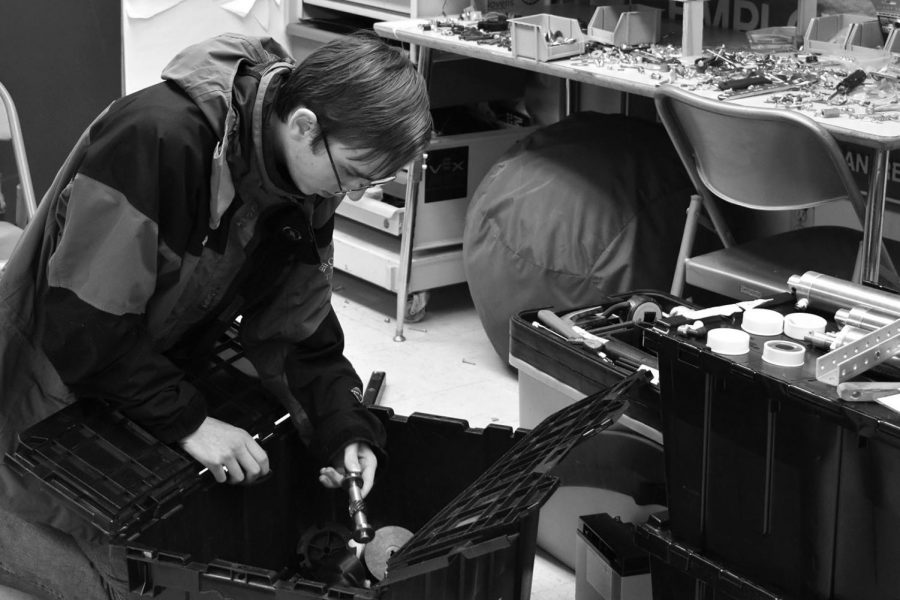AT FIRST GLANCE it looks like a normal classroom: groups of kids crowd around laptops and notebooks. Some sit with headphones on, working alone, while others are engaged in conversations or group work. Nothing appears out of the ordinary from a distance, but up close the differences become apparent. The kid sitting alone with headphones on is working on a graphic design project. The group conversation is actually a debate about robot design strategies. And in the corner, a boy sits making a robot out of cardboard, wooden dowels, and hot glue.
If you didn’t know it, you might not be able to tell that it was a robotics team meeting. The robot the boy in the corner was making was actually a prototype of the bot, which the rest of the team planned on building to use in upcoming competitions. Outside of the classroom, other members work on a full size version. This all happens in a loft jam packed with building materials, tools, and eager team members. They call it “The Hive.”
“It’s a technical hands on experience,” mentor John Norris said. “You get a lot of people that really want to build things and want to work with their hands and make a design and actually see it come to life.”
According to junior Ori Hales, in the past the team has spent anywhere from four to six weeks of the month and a half long “build season” actually assembling the robot. However, there are a lot of things pertaining to the build process that don’t involve the physical assembly at all. For example, a few members work on Computer Aided Design, or CAD.
“[CAD] is an easy way to make sure pieces fit together and we have all the proper dimensions without physically building it ourselves,” senior Marcella Norris explained.“Instead, we create a 3D digital copy.”
There are also groups who work specifically on pneumatics, electrical, and software.
Back in the classroom, the whole team gathers and studies a spreadsheet, which breaks down the different risks of the game. Each year the competitions center around a different game in which the robot has to execute specific tasks to earn points. Because the game changes every year, strategy is something the team spends a lot of time discussing.
The meeting turns into a debate with each student sharing their own opinions. Some even share two or three times. Once everyone’s points of view are on the table, they decide as a team how to proceed for the rest of the season.
“With sports, it’s the same game all the time… If you know how to play it and you’re good enough at it, you can just do the same thing every year,” Hales said, “but with robotics, it’s a new game every year, and you only have six weeks to prepare [once] you know what the game actually is.”
Other than all the aspects of the team involving the robot and the game, there are other tasks that aren’t related to the robot at all. Tasks like fundraising, graphic design, social media, and community outreach are all things the team has to address.
In the end, all of these things boil down to the competition. Mentor Eric Shilling explains it as “1,000 geeks in one room, and they all have one central focus.”
However stressful competitions may be, junior Melissa Smith describes them as being a lot of fun. “A lot of [what makes the team unique] is our competitions and the things we do at the competitions because our team is really dorky,” Smith said. “Last year, our tradition was before every match we’d link arms and yell ‘Never Gonna Give You Up’ at the top of our lungs.”
This season, the team has its first competition on March 9th and 10th. According to Marcella Norris, they hope to make it back to the Pacific Northwest championships, which they competed in last year, and score even better this time around.


